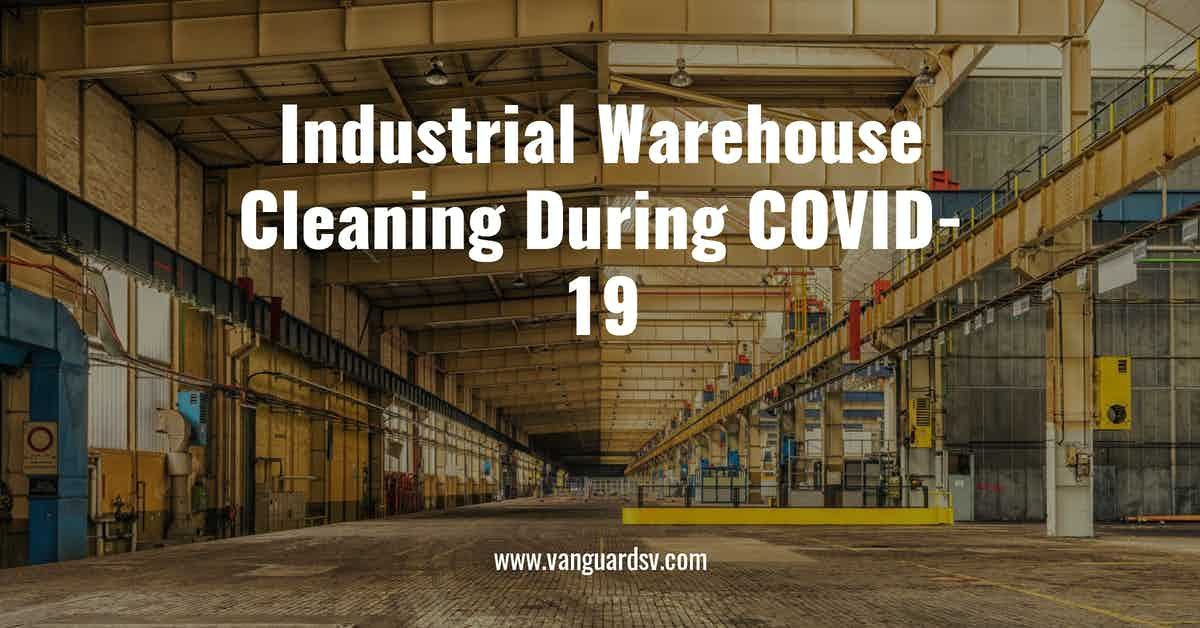Industrial warehouses are critical to the supply chain, but are susceptible to the transmission of pathogens between workers and surfaces, so they must be regularly cleaned and maintained according to the highest standards.

The Challenge of Warehouse Cleaning Before, During, and After COVID-19
Industrial warehouses are an increasingly necessary component of day-to-day living during the extended lockdowns, which have forced an often extreme shift in how consumers acquire necessary products from manufacturers.
The initial strain brought about by the pandemic and subsequent quarantine placed a spotlight on many industry leaders in the logistics and supply chain arena, highlighting several areas where employees and outsiders felt the workforce's health and safety were placed in jeopardy.
While well-published media concerns surrounded challenges such as social distancing and access to hand sanitation systems, other primary routes of pathogen transmission are typically poorly understood--specifically floor sanitation.
Additional warehouse facility cleanliness issues directly related to worker health and well-being have been, in general, ignored or underreported.
Understanding the Intersection of COVID-19 and Warehouse Cleanliness
One of, if not the most critical areas to clean in an industrial warehouse is the floor.
Typically, this is looked upon as a component of workforce safety and productivity.
However, in the age of COVID-19, everything is suspect, including occupant shoes and the floors they travel on.
Studies published by the U.S. Centers for Disease Control and Prevention found that a primary route of transmission and spread for SARS-CoV--2 was on the bottom of worker shoes, which spread the virus all over the floor.
According to the CDC:
The rate of positivity was relatively high for floor swab samples, perhaps because of gravity and air flow causing most virus droplets to float to the ground.
In addition, as medical staff walk around the ward, the virus can be tracked all over the floor, as indicated by the 100% rate of positivity from the floor in the pharmacy, where there were no patients.
Furthermore, half of the samples from the soles of the ICU medical staff shoes tested positive.
Therefore, the soles of medical staff shoes might function as carriers.
We highly recommend that persons disinfect shoe soles before walking out of wards containing COVID-19 patients.
Additionally, the fecal transmission of SARS-CoV-2 via toilet plumes, though not entirely common, has been confirmed, underscoring the importance of routine enhanced cleaning for worker restrooms throughout the day.
Per the Infectious Disease Advisor:
Most authorities state that SARS-CoV-2 is transmitted mainly by close contact and fomites; however, there is increasing evidence that SARS-CoV-2 viral particles may shed in feces.
Researchers from China investigated a case in which transmission through indirect contact occurred in an apartment building via particles carried on air streams within the pipe network that entered the interior of the building from the wastewater system.
This reported case involved an outbreak of 9 confirmed cases of COVID-19 in a high-rise apartment building (3 vertically aligned flats; block X) in Guangzhou, China, during a period of social distancing.
Block X includes 29 floors with 3 apartment flats on floors 2 through 28, and 2 flats on floor 29, for a total of 83 flats. In total, 9 infected patients, 193 other residents of the building, and 24 building management staff were included in the case.
Results suggest that fecal aerosol transmission may have caused the community COVID-19 outbreak based on circumstantial evidence.
The observed infections and the locations of positive environmental samples are consistent with the vertical spread of virus-laden aerosols via these stacks and vents.
COVID-19: SARS-CoV-2 Transmission Probable Through Fecal Aerosols
Addressing Additional Areas of Concern to Worker Health and Wellness
In addition to floor sanitation, restroom hygiene, and breakroom cleanliness, indoor air quality is of paramount concern to workforce wellness and productivity.
High levels of dust, microbes, and other pollutants commonly associated with cardboard, industrial chemicals, and a high degree of foot traffic in and out of a building combine to create a level of indoor air pollution that can induce physical symptoms of illness and fatigue and reduce workforce productivity, engagement, and job satisfaction.
Routinely cleaning and servicing warehouse air circulation systems and installing commercial-grade air cleaners will help eliminate airborne pollutants that reduce workforce wellness and may help reduce the presence of airborne SARS-CoV-2 particles.
Takeaway
The importance of maintaining industrial warehouses during the pandemic is obvious.
Protecting the warehouse workers' health and safety through enhanced cleaning and disinfection services is fundamental to keeping the warehouses open and productive.
Outsourcing is a proven method for ensuring the highest standards of cleanliness, safety, and training while controlling costs and eliminating management overhead.
If you would like more information regarding the effectiveness of high-performance infection prevention and control measures, or if you would like to schedule a free, no-obligation onsite assessment of your facility's custodial needs, contact us today for a free quote!
In Bakersfield, CA, call (661) 437-3253
In Fresno, CA, call (559) 206-1059
In Valencia CA, or Santa Clarita CA, call (661) 437-3253
In Palmdale, CA or Lancaster, CA, call (661) 371-4756

